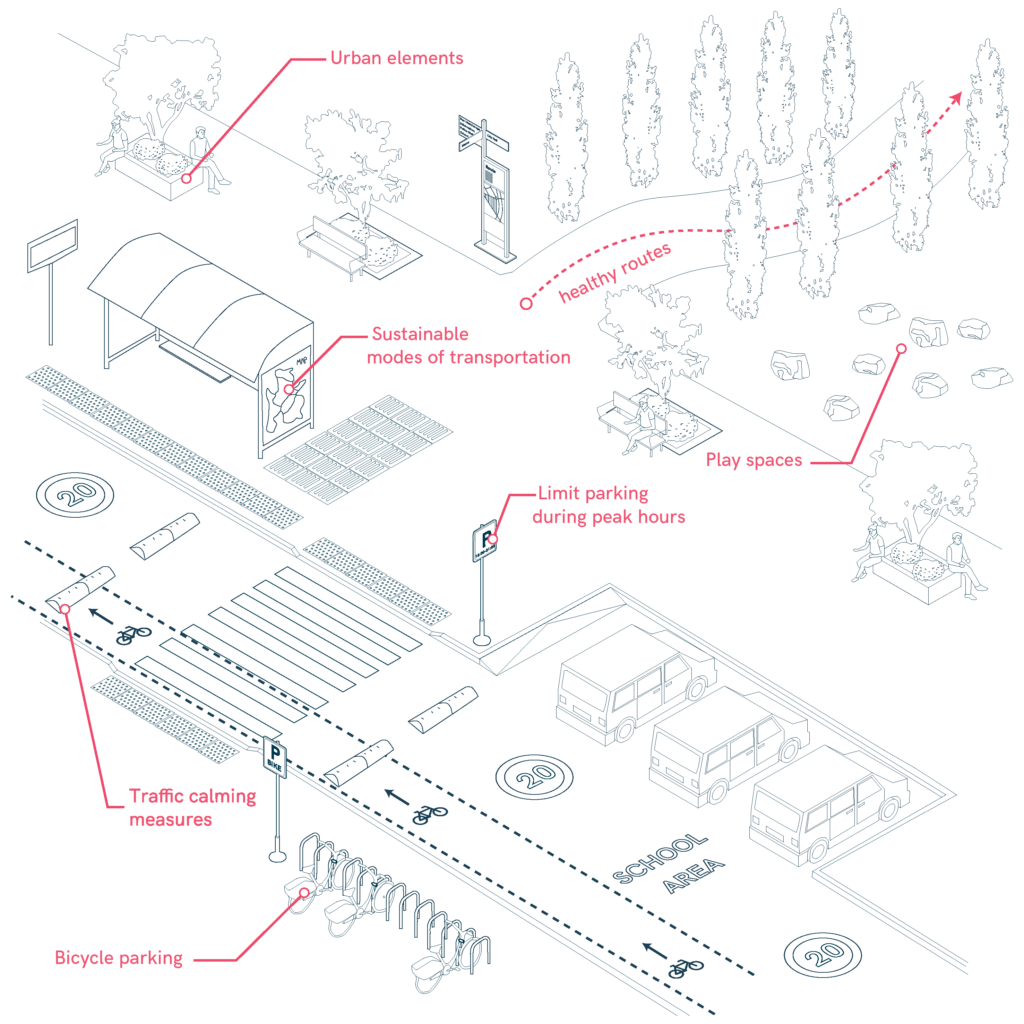School Pathways
Safe and accessible school pathways promote independent mobility among children while ensuring their safety and well-being. By establishing well-defined routes, improving urban infrastructure, and engaging the community, school journeys can become safer, more inclusive, and sustainable. These pathways, designed in collaboration with schools or educational centers, are approved and marked by local authorities to support children walking, biking, or using scooters. To enhance safety and accessibility, traffic control measures such as speed reduction, parking limitations, and infrastructure modifications are essential. Prioritizing pedestrian-friendly environments fosters a sense of autonomy and encourages healthier, more sustainable transportation habits.

- Create clear zones for pedestrians, vehicles, and communal spaces using urban elements like furniture, vegetation, and pavement changes.
- Widen sidewalks, install safe crosswalks, and implement traffic calming measures to reduce speeds.
- Limit parking during peak hours to ensure safe access to school areas.
- Use permeable materials, accessible urban furniture, and clear signage to enhance navigation and comfort.
- Provide bicycle parking options and encourage sustainable modes of transportation.
- Develop play spaces and healthy routes that promote active mobility.
- Use clear and concise signage to indicate school zones, speed limits, and pedestrian crossings.
- Involve neighbors, students, and parents in the design and decision-making process.
- Establish a maintenance plan and regularly evaluate the effectiveness of implemented measures.
Sources
- https://accessible-eu-centre.ec.europa.eu/content-corner/digital-library/en-172102021-accessibility-and-usability-built-environment-functional-requirements_en
- https://www.miteco.gob.es/fr/ceneam/recursos/materiales/guia-diseno-entornos-escolares.html
- https://www.codigotecnico.org/pdf/Documentos/SUA/DccSUA.pdf
- https://www.cocemfe.es/wp-content/uploads/2020/02/Guia-basica-accesibilidad-centros-educativos.pdf
- https://www.oficinadeaccesibilidaduniversal.es/doc/educativa/centros-educativos/Accesibilidad%20cognitiva%20en%20centros%20educativos.pdf
- https://afaunamuno.org/wp-content/uploads/2023/02/Criterios-Intervencion-EE-30Mar_22.pdf
- Carers
- Children
- Cognitive
- Cognitive abilities
- Decolonial perspective
- Digital
- Digital barrier
- Enviroment
- Environmental
- Gender and generations
- Gender perspective
- Hearing impairment
- Low-education
- Low-income
- Older people
- Other
- Physical abilities and features
- Sensory and Physical
- Socioeconomic
- Visual impairment